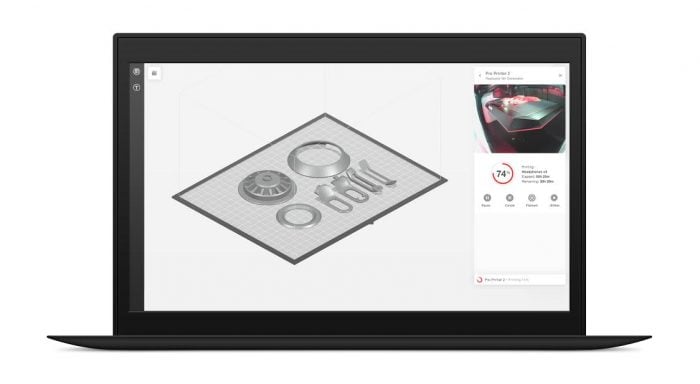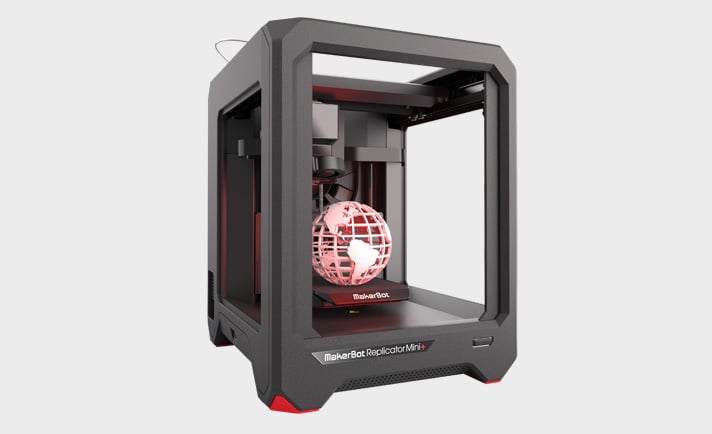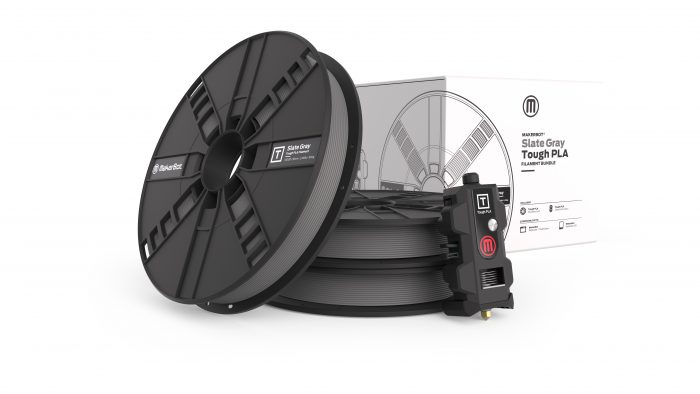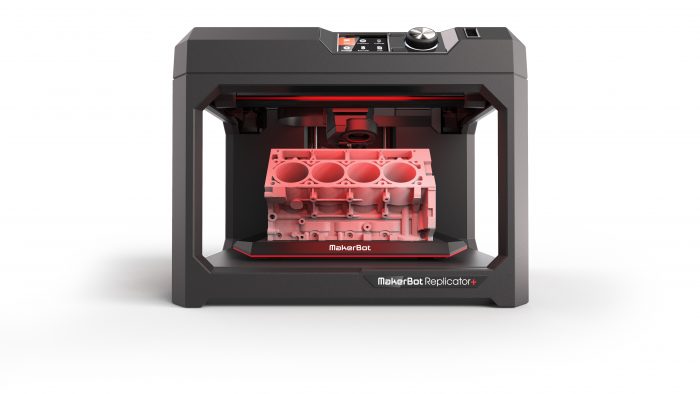
This week MakerBot unleashed a series of announcements regarding their products, services and supplies.
The announcement included new mobile and desktop software, new materials, new web support systems and, oh yes, a couple of new 3D printers hidden in the text.
Let’s take this one piece at a time.
The new MakerBot Mobile and Print apps have been redesigned to permit more streamlined workflows, particularly with the education and professional market.

The software apparently includes “native CAD support”, suggesting that CAD users can 3D print without the need to handle X3G files, which to be honest, is a bit of a pain if you need to put them on an SD card and walk it over to the 3D printer. For professionals who value each minute of the work day, savings like this are important.
The print software also includes features we have not previously seen from MakerBot: individual model control. In the new software you can automatically load multiple models at once onto the build plate – and you can even 3D print them in sequence (rather than simultaneously) with different printing parameters.
This is really important because a failure of a large simultaneous print screws up the entire print job, while a failure with individual prints typically loses only one 3D model. It makes 3D printing more efficient because more parts can be loaded at once – dramatically reducing setup and handling time.
The company also announced not one, but two new 3D printer. Well, they are modifications to their previous models to be sure, but the modifications are actually quite good.
The Replicator+ improvements include a larger build volume of 295 x 193 x 160mm – wider and taller than the no-longer-offered Replicator 5th Gen. It also has sturdier construction, including a far stiffer cantilevered bed – adopting a common third party upgrade done on prior models. Oh, and the bed is leveled at the factory so theoretically you don’t have to do so at installation.
What I like the most about this machine is that it finally includes a proper print surface. It’s made from a plastic that naturally adheres strongly to PLA plastic, meaning you can put that roll of blue tape away forever – prints just stick.
Even better, the print surface is removable and can flex – meaning you can very easily remove rigid prints as they’ll pop off like ice cubes from a tray.

The new Replicator Mini+ is also a bit larger, with a build volume of 102 x 127 x 127mm (wider than the old Replicator Mini). It also includes the factory leveling, new build surface and redesigned mechanicals as it’s larger sibling, the Replicator+.
Both new machines make use of the existing Smart Extruder+, the fancy extruder MakerBot spent considerable time perfecting over the past year.
The pricing of these machines is quite interesting. Both are offered at a substantial discount, at least for the launch period. The Replicator+ is set at USD$1,999, USD$500 off their normal price (20% discount). Meanwhile, the Replicator Mini+ is offered for USD$999, USD$300 off (23% discount).
The Replicator+ improvements seem focused on making the device a bit more efficient when being used in a professional setting, while the Replicator Mini+ improvements provide similar benefits in education settings.

Finally, MakerBot introduced a new material: “Slate Gray Tough PLA Filament”. This is a specially designed material to provide a material with properties similar to ABS, yet with the ease-of-printing attributes of PLA. Basically, it offers a bit of bend that makes parts less brittle and much more useful for producing functional parts.
This fills a feature gap on the Replicator line, which can print only PLA. ABS and other materials were relegated to the now-aging Replicator 2X, which still appears on MakerBot’s store. But with new materials starting to appear on the main Replicator+, one must begin to wonder how long the Replicator 2 will last.
These improvements may seem to be a random collection of good features, but there’s a lot more to it.
They have been specifically designed to greatly enhance the usage experience of educators and professionals, who now become MakerBot’s prime markets. Yes, MakerBot began in the hackerspaces years ago and made gear primarily for DIY folks, but with this announcement it is entirely clear that MakerBot has left that market for others to pursue.
Via MakerBot

